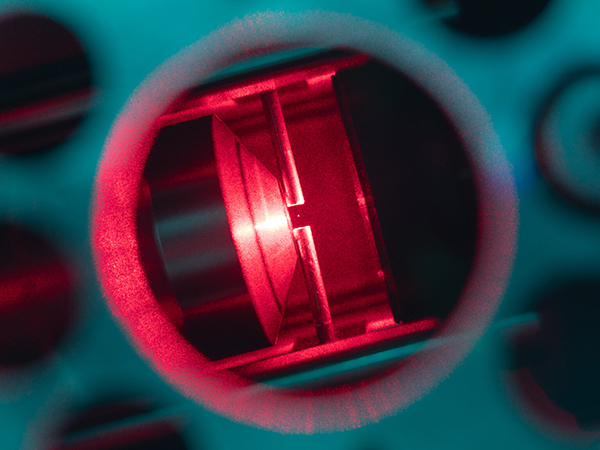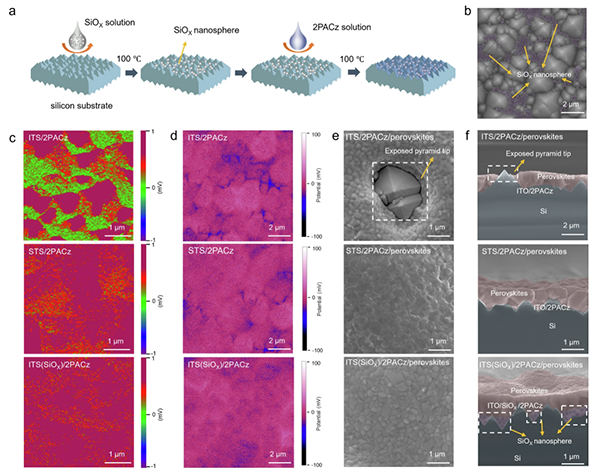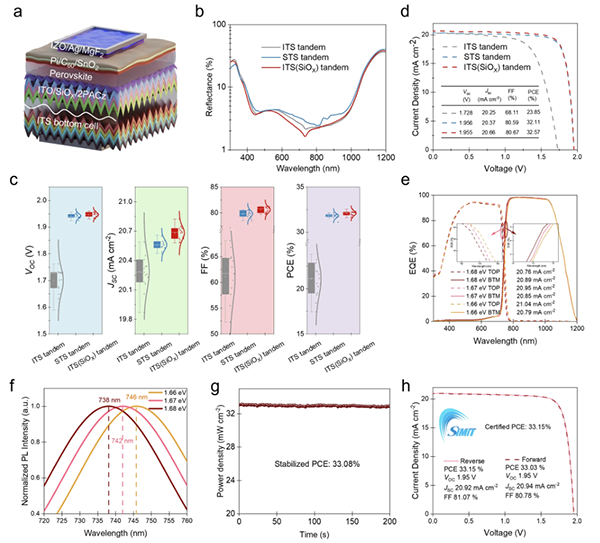China's photovoltaic technology has set a new world record! A research team from Zhejiang University has successfully developed a perovskite-silicon tandem solar cell with a certified power conversion efficiency of 33.15%, utilizing industrially textured silicon (ITS) substrates and an innovative silicon dioxide (SiOₓ) nanosphere interface technology. This achievement not only breaks the efficiency record for similar devices but also makes a major breakthrough in stability, removing a key barrier to industrialization.

Image Source: Internet
Industrial Textured Silicon Substrate: Perfect Balance of Cost and Performance
Solving the "Iceberg-Like Pyramid" Problem: Traditional industrially textured silicon surfaces are covered with micron-sized pyramid structures. While these enhance light trapping, they pose a significant challenge ("iceberg-like pyramid" problem) for the uniform deposition of the upper perovskite film, hindering commercialization.
Direct Compatibility with Existing Production Lines: The Zhejiang University team innovatively chose industrial textured silicon (ITS) as the substrate. "These substrates can be manufactured directly on existing silicon cell production lines, ensuring scalability and compatibility with industrial practices, while their textured surface effectively improves light trapping efficiency," emphasized the research team. This choice fundamentally resolves the cost and process challenges of large-scale production.
Silicon Dioxide Nanospheres: The "Magic Wand" of Interface Engineering
Precise Filling, Perfect Paving: The core innovation lies in using silicon dioxide (SiOₓ) nanospheres to fill the valleys between the silicon pyramids. This significantly improves the coverage of the self-assembled monolayer (SAM) and provides an ideal platform for subsequent perovskite layer deposition.
Surpassing Traditional Solutions: Compared to previously used aluminum oxide nanoparticles or poly(methyl methacrylate) (PMMA), silicon dioxide nanospheres settle more effectively and fill the microscopic valleys of textured silicon during the spin-coating process, delivering superior results.
Molecular Layer Reinforcement: After nanosphere treatment, the silicon substrate is covered with a self-assembled monolayer (SAM) composed of phosphonic acid (2PACz), laying a solid foundation for perovskite growth.

Image Source: Internet
Record-Breaking Performance and Outstanding Stability
Efficiency Tops the Charts: Under standard illumination conditions, a tandem cell with an area of 1 cm² achieved a certified power conversion efficiency of 33.15%. This is the highest efficiency reported to date for a monolithic perovskite-silicon tandem solar cell based on an industrially textured silicon substrate.
Stability Leap: Even more exciting is its exceptional stability performance. The research team specifically noted: "Notably, we found that the buried perovskite interface at the pyramid valleys is reinforced in the tandem device." Tests showed that after operating for 1000 hours, the cell still retained 91.7% of its initial efficiency. By contrast, a control tandem cell using submicron-textured silicon (STS) retained only 78.4% efficiency, highlighting a very significant stability advantage.
Technical Details and Future Blueprint
The champion cell structure comprises, from top to bottom: an indium tin oxide (ITO) electrode / 2PACz SAM layer / perovskite absorber layer / tin dioxide (SnO₂) buffer layer / fullerene (C60) electron transport layer / indium zinc oxide (IZO) transparent back electrode / silver (Ag) metal contact layer. The fine interlayer design ensures efficient charge extraction and transport.
This milestone research has been published in the prestigious international journal Nature Communications, under the title "'Iceberg'-like pyramids in industrial-textured silicon enabling 33%-efficient perovskite-silicon tandem solar cells".

Image Source: Internet
The success of the Zhejiang University team lies in the ingenious combination of a directly industrializable substrate material (ITS) with innovative silicon dioxide nanosphere interface engineering. While shattering the efficiency ceiling, they significantly improved the core commercialization pain point of tandem cells: long-term stability. This breakthrough marks a substantial step forward for perovskite-silicon tandem technology towards large-scale commercial application, providing a powerful Chinese solution for the global photovoltaic industry to break through efficiency limits and further reduce costs.